Initiating Digital Transformation: Nobody Wants to Get “Ubered”
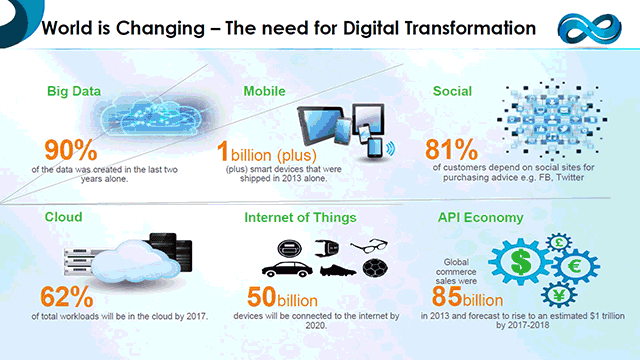
The history of change
Transformation is an ancient concept, essentially unchanged in modern European languages from its Latin roots of “going beyond” an original form or limit. Its Greek counterpart, metamorphosis, has similar meaning, “meta” referring to a boundary marker or a limit of an original form.
It’s been put to use creatively in modern times by Eugene Ionesco in “Rhinoceros,” an absurdist play about how mass transformation can be viewed as fascism, and earlier by Franz Kafka in “Metamorphosis,” a disturbing novella, in which a man’s transformation into a cockroach-like figure only highlights his alienation from a mundane world.
Musically, the sibling concept of “transfiguration” was set by Richard Strauss in “Death and Transfiguration” and by Arnold Schoenberg in “Transfigured Night,” two great works that are loosely based on liberation from life’s struggles and redemptive love.
A new reality
However, not everyone manages to adapt to the changing winds, staying behind. Many are slowly dying out (unless hop on the last train):
- Railroads didn’t realize they were in the transportation business, as they thought they were in the railroad business.
- Some of the leading camera manufacturers failed to adapt to the world of digital photography, losing their top positions.
- Many retailers still haven’t realized they are in the service business, not the goods business.
- It took time for traditional media companies to understand the social nature of today’s media.
- Most providers of game/movie rental services, such as Blockbuster, were unable to survive in the age of Internet and online streaming.
These sad examples are the stories of companies that had trouble defining what they were in the changing world (even though the railroads have certainly recovered in recent years). They provide clear guidance of what happens if you don’t adapt to changes quickly enough.
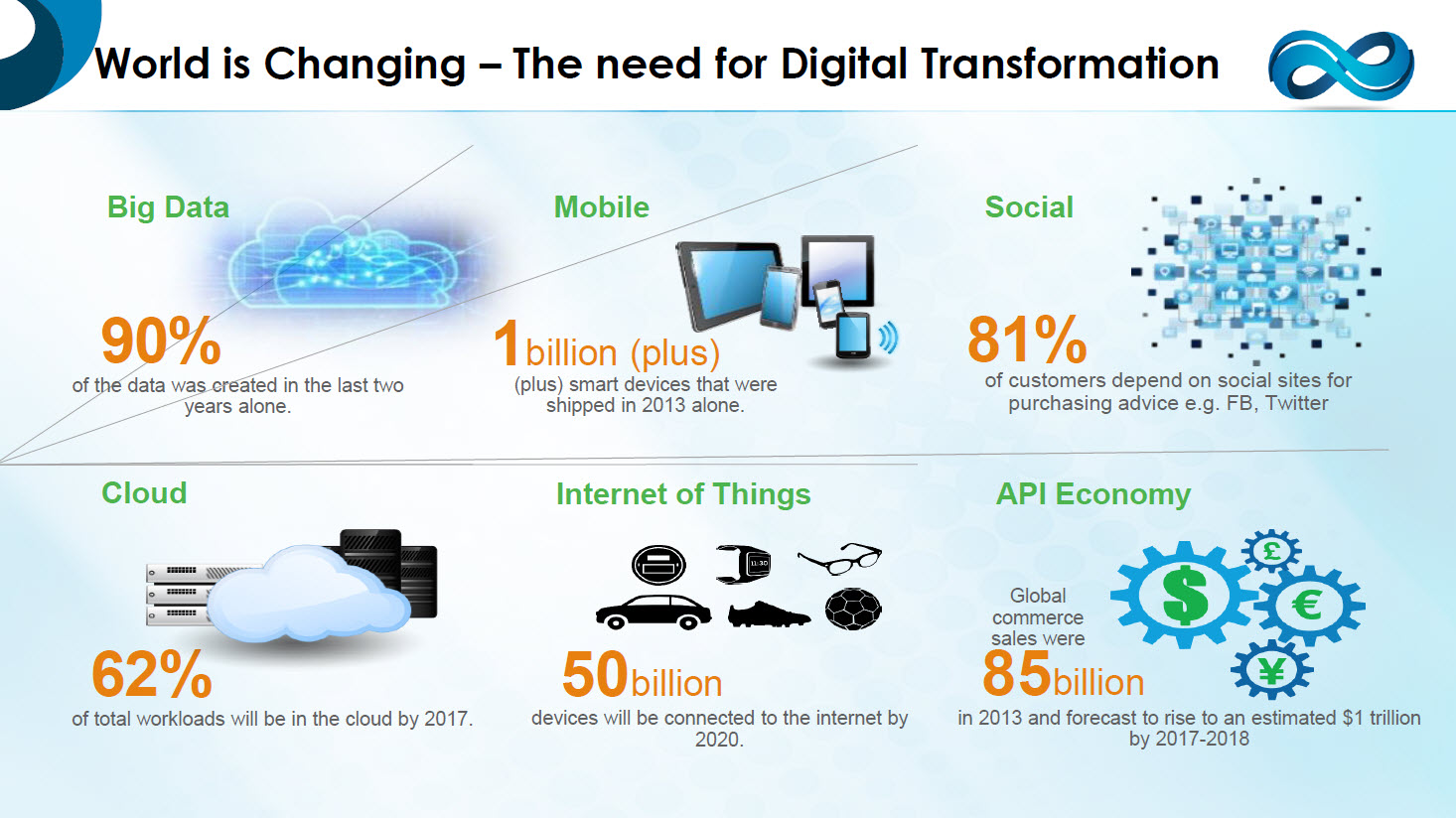 Technology trends pushing digital transformation (Source)
Technology trends pushing digital transformation (Source)Yet, simply avoiding the mistake of ignoring new trends isn’t enough anymore. Today, new businesses are creating new categories and breaking old rules.
Disruptors are here
New business models and new reality give life to companies that change the way we live and operate. Some even seem like flukes:
- Who would have thought the city’s government-controlled stranglehold on taxis could be put to waste by random, uncertified drivers beckoned by Uber‘s phone app?
- Who thought Facebook would thrive and survive in a way that Friendster and MySpace have not?
- For that matter, how did the idea of buying books from an online-only store called Amazon transform into the dread of all retailers and technology providers?
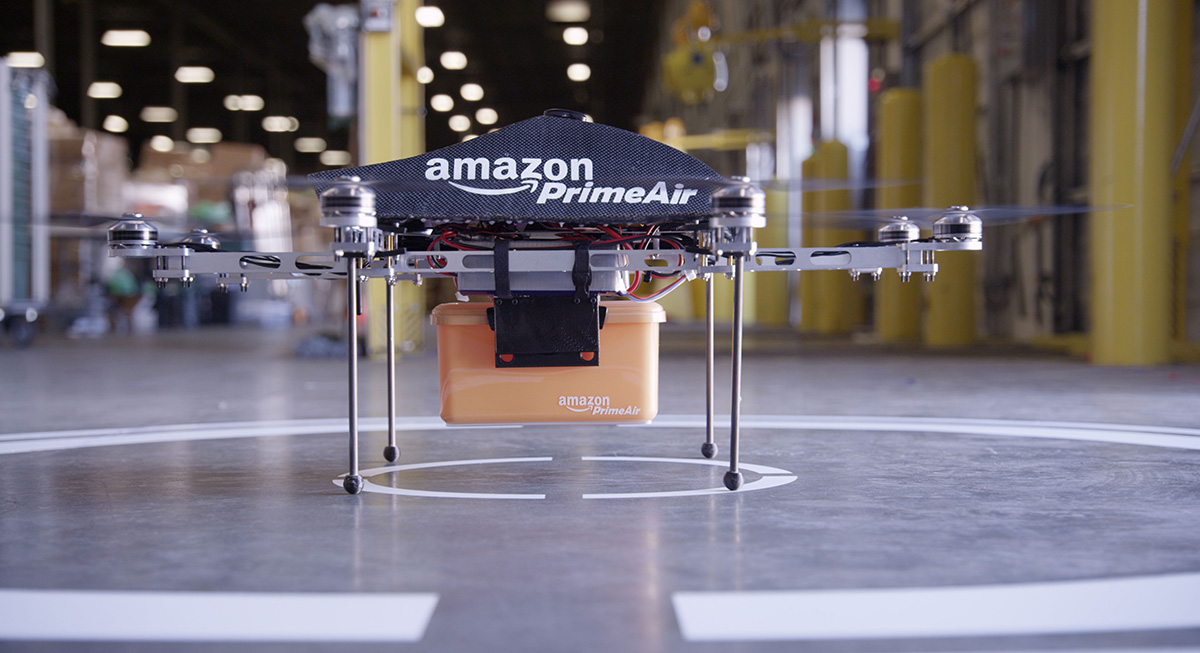 New delivery models from Amazon engage drones (Image credit)
New delivery models from Amazon engage drones (Image credit)
How did they survive?
The key to understanding the success of the above companies is to understand their primary focus and dependence on IT, efficiently involving software, data, and people.
Uber has built a magnificent mobile interface that’s easy to navigate. Cost estimates are quick and accurate. Users know where their drivers are, and now long before they arrive. A driver’s pic, a car model, a license plate, and rating are all readily available. The back end is receiving and processing a lot of data when one imagines all of the cities, in which Uber operates.
Facebook managed to grow from hundreds to thousands of users, then to millions and billions, without serious hiccups along the way. It integrates ads, messaging, and virtually unlimited posting and sharing functionality. Facebook’s back-end IT achievement has been so radical and astonishing that it has open-sourced its hardware specs to let others join the party (and potentially sell hardware to Facebook).
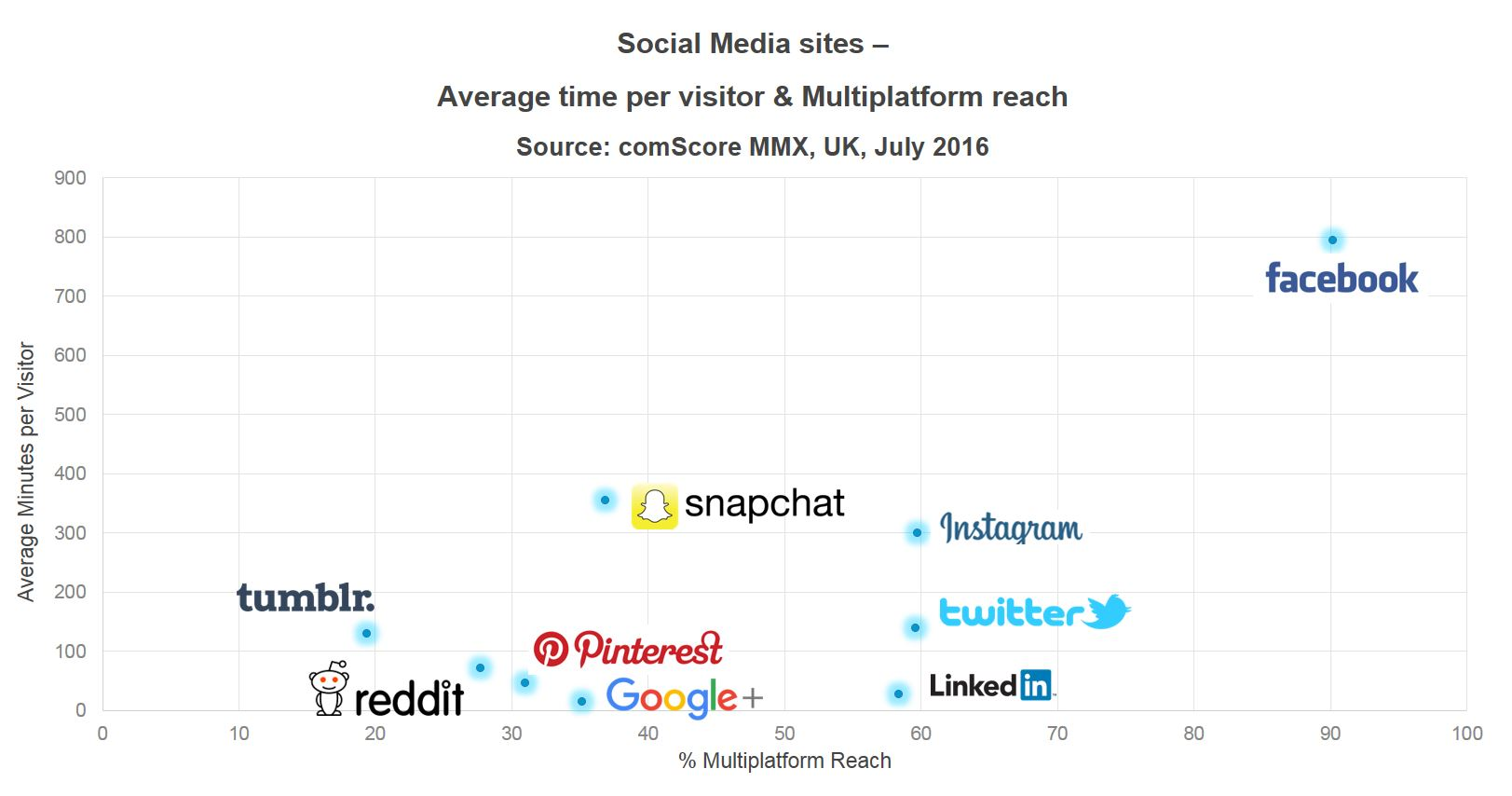 Facebook dominating the social media landscape (Source)
Facebook dominating the social media landscape (Source)Amazon has mastered the art of integrating inventory, presentation, comparative search, pricing, delivery, payment, and follow-up for millions of customers. Its back end was so sophisticated it was able not only to take care of its vast internal needs, but become the clear market leader in offering cloud services to enormous customers like Netflix and individual developers alike.
The success of these three companies all past have created a widespread fear of getting “Ubered” (or Facebooked, or Amazoned). The idea of vast disintermediation (i.e., removing the middle man) has been with us for three decades, but is now “on steroids” with the near-ubiquitous availability (in developed economies) of high-speed Internet access. Nobody wants to get Ubered.
Becoming a “data company”
So, what does these examples have to do with transformation today, and more specifically, digital transformation in today’s large enterprises?How do you focus on your existing core competencies and not only avoid getting blown out of the water or simply copying someone, but become a disruptor yourself? How does an existing Global 2000 enterprise maximize its chances of remaining a top global company? How does it “disrupt the disruptors”?
The lesson here is that these companies had taken an all-in commitment to IT as the heart and soul of everything they do. Their enterprise IT is not something that supports the business—it is the business.
This lesson also manifests itself today by several traditional enterprises, who claim to “get it” by declaring that they are no longer in the business of whatever it is they make, but in the data business. The end product is just a formality of sorts.
Ford is a prominent example of a large, traditional company willing to become the “data company.” Certainly, Ford feels pressure from its own disruptive competitor—Tesla—in redefining the automobile industry.
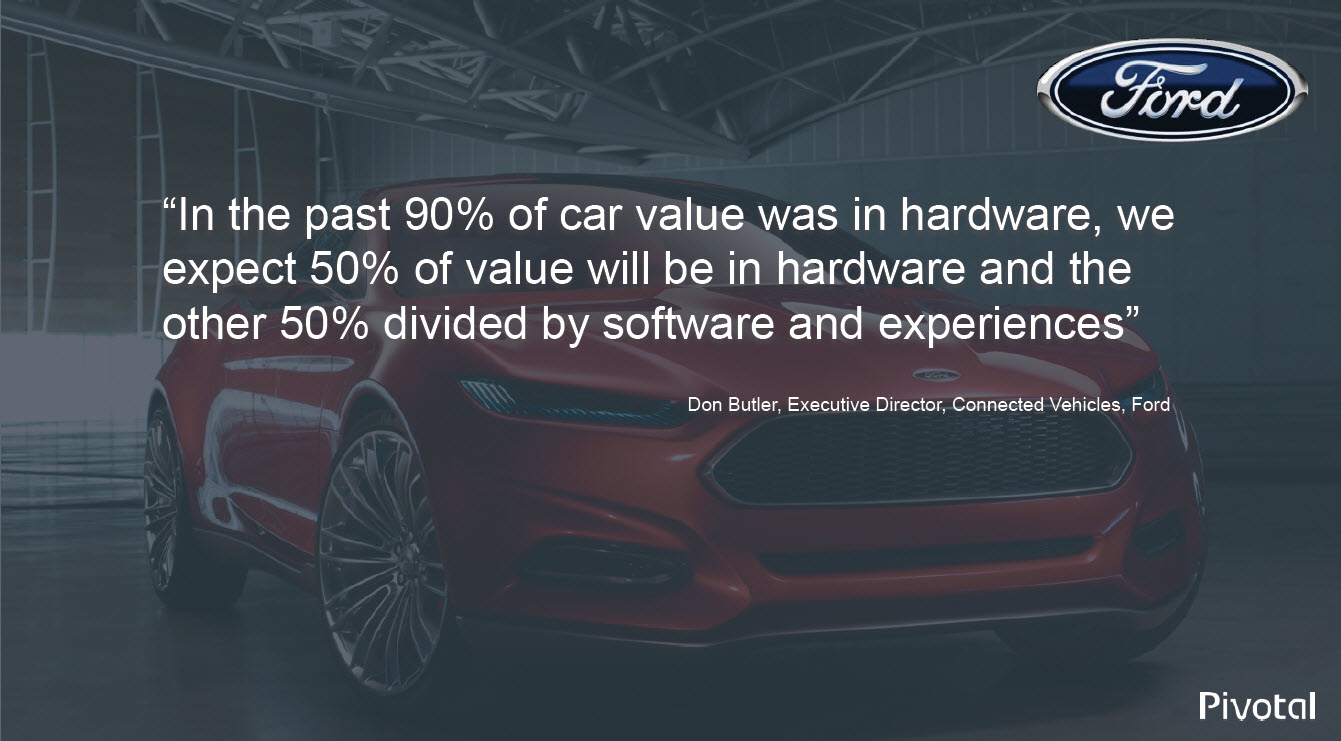 Ford transforming to become a “data company” (Source)
Ford transforming to become a “data company” (Source)Nike is aiming for the same thing for some years already, staying a unique case of a market leader and disruptor. Other prominent examples of self-described “data companies” include Intel, Macy’s, Alibaba, Liberty Mutual, and others.
“We knew we had to become a software company that sells insurance to survive in today’s competitive world.” —Mojgan Lefebvre, Liberty Mutual
How to move forward?
The transformation process starts with the first question: what is your company now (in the 21st century) and what does it want to become, serving the market (and internal) needs more efficiently?
Yet, companies need to be wary of taking the “me too” or “wannabe” approach. The data talk aside, all of the disruptors mentioned above knew who they are and how to serve the market better. Their key insight has been to see enterprise IT as paving the path they would follow, not simply a path they think is popular in their industry. In creating and following their own paths, they view IT not as operational support or a department that provides services, but as the core of what they do and the core of their productivity.
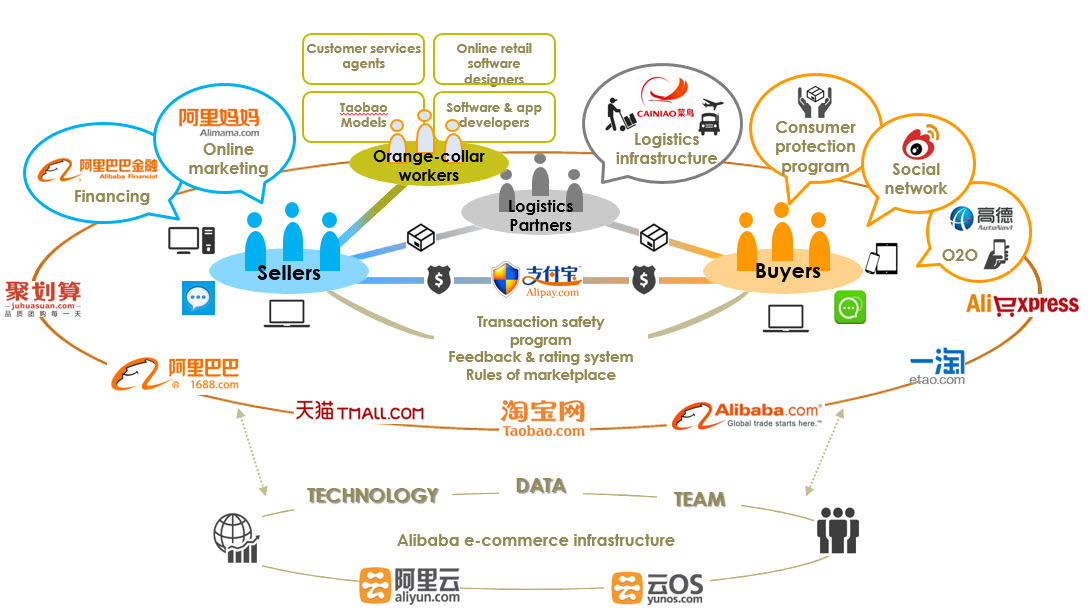 Alibaba’s ecosystem focused largely on data (Source)
Alibaba’s ecosystem focused largely on data (Source)Reading Sun Tzu’s Art of War, Walter Isaacson’s biography of Steve Jobs, and everything Peter Drucker and Warren Buffett have ever written or said is not going to be enough today. You also have to ensure your organization knows everything it can know about the technologies related to your business and use them selectively to establish an unquestionable and unique competitive advantage.
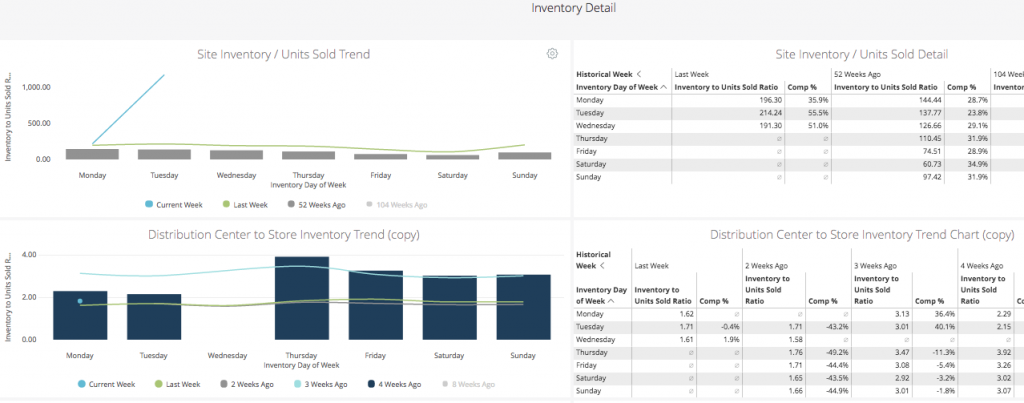 Macy’s employs big data flows to transform into a modern-day retailer (Source)
Macy’s employs big data flows to transform into a modern-day retailer (Source)
Embracing the technologies
We’re living in the midst of a hashtag fiesta, and it’s easy enough to think you’re just hearing hype and buzzwords.
But you’re not, in our opinion. Yesterday’s buzzy talk of “seamless interoperability” and “robust, powerful, flexible, integrated solutions” has been replaced by a straight-talking world, in which a vast toolbox of specific programming and scripting languages, platforms, frameworks, and utensils is available to all organizations. Much of this software is open-sourced, supported by enthusiastic communities, and many unique specialty tools have been created from open-source technologies.
Even seemingly general terms, such as “agile,” have specific meanings and can provide big value. Newer concepts, such as “microservices” and “serverless,” also have specific meanings, entail disciplined methodologies, and are proving out in enterprise-grade projects.
The trick is determining exactly what you can use these technologies to improve your own productivity and deliver better customer-oriented products. For example, one may want to “connect hundreds of suppliers in a regional, collaborative supply chain that keeps track of inventory, has pictures and detailed specs about each product, and makes ordering recommendations based on historic parameters and real-time conditions.”
To move faster than the disruptors, your implementation of the technology side should also become more rapid than ever before. Many enterprises/manufacturers, including Ford, Boeing, Honda, etc., addressed this with adopting a platform like Cloud Foundry. Or its distributions, such as Pivotal CF, IBM Bluemix, or GE’s Predix.
(Oh, and if you’re working on eliminating intermediaries, especially in the finance industry, consider if it’s worth putting your solution on a blockchain. Like several Canadian banks already did.)
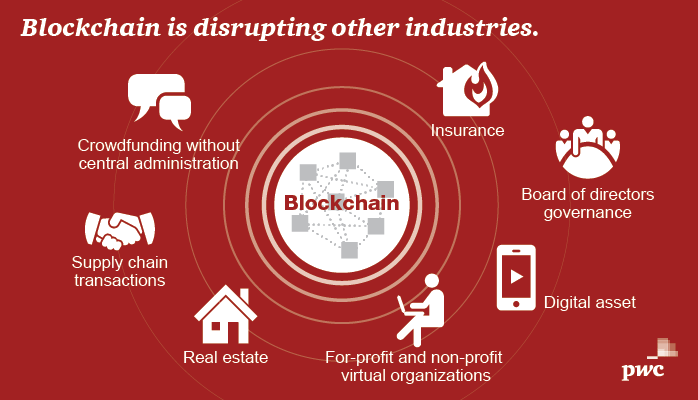 Multiple industries being transformed by blockchain (Source)
Multiple industries being transformed by blockchain (Source)For now, by following these first steps—understanding how your business model evolved in the high-tech era, growing as a “data” business, and embracing disruptive technologies—you can take the initial steps in your digital transformation journey. The secret sauce here is to efficiently improve the ways your IT, software, data, and people are serving the needs of the ever-changing today’s world.
Further reading
- Digital Transformation in Banking: New Challenges for a New Era
- From Hybrid to Multi-Cloud: Seeking Order Amidst Enterprise IT Chaos
- 2016–2017 Trends: Top 10 Issues of Enterprise IT







